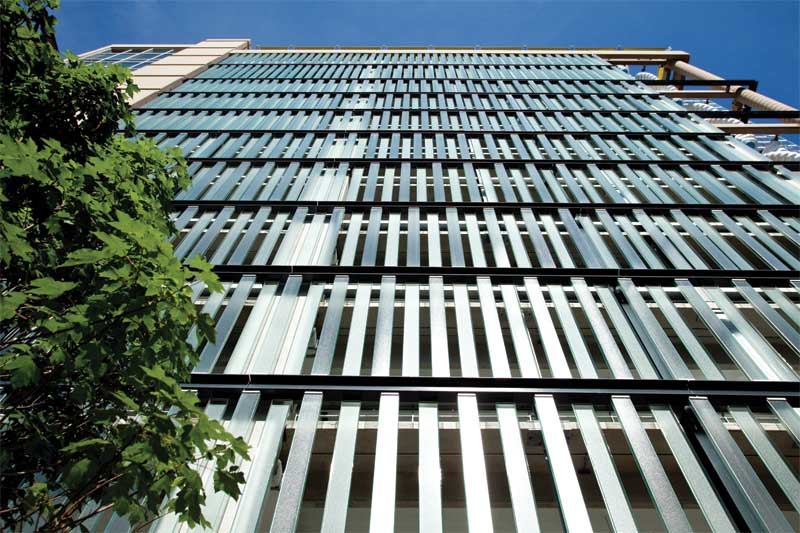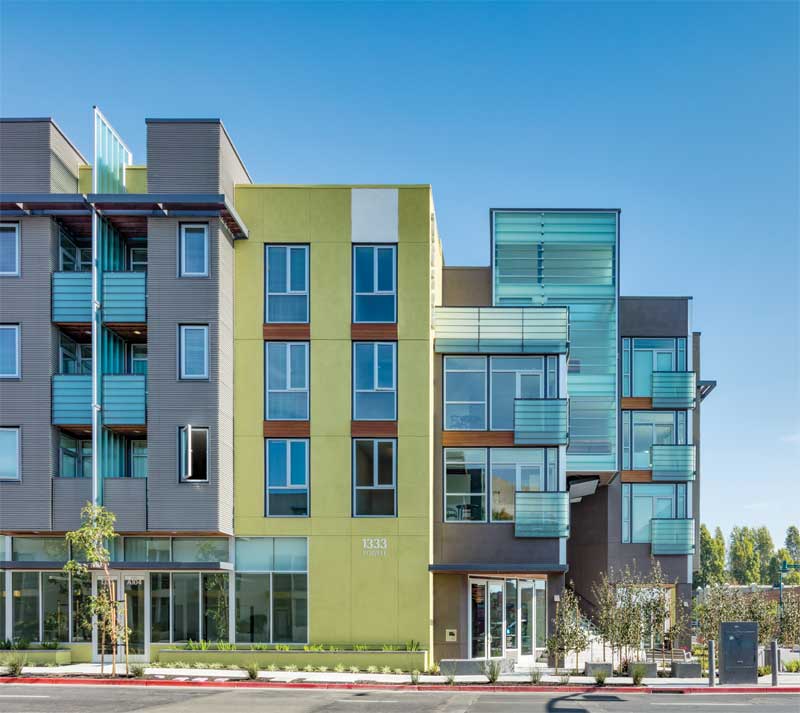How to avoid common channel glass pitfalls

Mixing up single- and dual-glazed channel glass criteria
Channel glass elevations are either single- or dual-glazed. Given the product’s versatility, one may assume the decision to specify single- or dual-glazed channel glass is a matter of design preference. However, project requirements drive this decision.
Single-glazed channel segments are typically specified in interior and exterior feature walls, including:
- decorative cladding;
- rainscreens;
- partitions;
- porte cochères; and
- other applications where wind loads, moisture infiltration, and energy efficiency are not concerns.
These feature wall applications typically have less stringent imposed loads and performance criteria, allowing the planks to be set in various customized arrangements in order to achieve a specific esthetic or enhance light transfer. This is particularly beneficial for vertical, single-glazed applications, since they do not require intermediate mullions. Custom clips can hold the channel glass planks in place, allowing for stunning staggered patterns or natural air ventilation (Figure 4).
Comparatively, it is typical to specify dual-glazed channel glass segments when the planks function as part of the building envelope. The overlapping channels help to bolster the system’s strength against imposed wind loads, which allows them to be used in place of traditional curtain walls and storefronts. The dual-glazed configuration also helps manage heat transfer, and is ideal when channel glass is used as a light-transmitting wall where heat gain or loss is a concern. For example, adding insulating materials in the gap created by the nestled channels, as well as low-emissivity (low-e) coatings, can reduce the solar heat gain co-efficient (SHGC) to as low as 0.31 and the U-value to 0.21 while still preserving light transfer.
Not accounting for project customization with fixed elements
Linear channel glass segments come in various face widths, ranging from 232 to 331 mm (9.13 to 13 in.), with consistent flange depths. While the differing widths make it easier for architects to design within set parameters, it is still crucial to account for project customization when working with fixed elements—both for the channel glass system and conditions surrounding the assembly.
For example, constraints such as doors, vision windows, building columns, and other fixed elements may in fact need to move slightly to achieve a full plank look. If it is impossible to move these elements in a building, the channel glass system may be able to move around these objects with appropriate planning in the design or construction phases.

One way to accomplish this is to alter the spacing of the glass joints. The installation team can adjust the glass at the head or jamb since the extruded aluminum perimeter frame typically allows for flexibility in glass bite (i.e. how much of the frame depth is taken up by the glazing). The installation team can also create a stepped transition (i.e. an area where the glass lengths decrease from the adjacent planks in order to ‘step’ around a fixed element such as a beam or doorway) to achieve the appropriate configuration (Figure 5). This requires using flange-cut pieces (i.e. L-shaped pieces of channel glass) along with a mix of standardly available plank widths.
Given the detailed customization available for these solutions, it is necessary to engage the manufacturer or supplier early during the design phase. If this is not done during the tender phase, it will instead occur at the time the product is ordered, but such a course of action will require correcting certain design assumptions that were made without the manufacturer’s involvement. This could lead to delays in product delivery or in a design esthetic that was not originally desired.
It is also critical to leave room for custom work and budget in time for technical support when using channel glass in the following applications:
- extreme sloped glazing;
- vertical fins; and
- assemblies with varying elevations.
For example, when specifying channel glass in assemblies with an extreme slope, it is important to address safety, as well as air and water management. Specifically, since channel glass is a ventilated system and not an insulated glass unit (IGU), it is necessary to allow condensation or other moisture to drain from the sill. The greater the slope of the glazing, the more difficult this becomes. While there is often a solution, early and appropriate planning is key.





